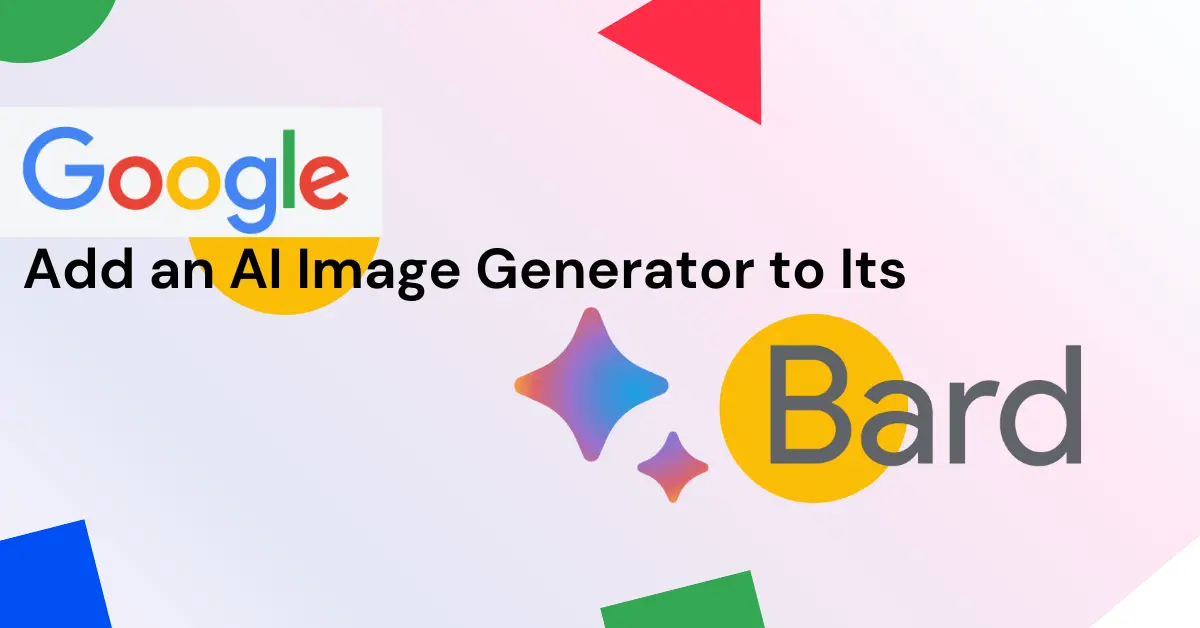Google recently unveiled its Bard chatbot to compete with ChatGPT. While Bard focuses on providing informative answers to questions, some speculate that Google may look to add an AI image generation feature similar to DALL-E or Stable Diffusion. Here’s an overview of this possibility and what it could mean.
What is Google Bard and How Does it Currently Work?
- Bard is Google’s conversational AI chatbot that can provide detailed answers to natural language questions
- It is powered by Google’s LaMDA AI model and meant to be an experimental service for now
- Bard aims to give high-quality, factually accurate information by searching the web and summarizing details
- However, it currently does not have any ability to generate images
- The chatbot is named after William Shakespeare and aims to have a tone reminiscent of the famous poet and playwright
Why Might Google Add an AI Image Generator to Bard?
- Image generation has become a popular use of AI, with services like DALL-E 2 and Stable Diffusion
- Adding this capability could make Bard more versatile and competitive with other chatbots like ChatGPT
- Users are already creating images to accompany Bard’s text, so having an integrated feature could improve the experience
- It aligns with Google’s strengths in computer vision and image processing through projects like Image Search
- Google may want to prevent users from needing to go elsewhere for AI image generation
What Could an AI Image Generator in Google Bard Look Like?
- Users could potentially describe an image or scene and ask Bard to generate it
- There could be options to specify art styles, backgrounds, subjects and more
- Bard may allow iterative feedback to refine images until the desired result is achieved
- Generated images could accompany Bard’s text responses when relevant
- The integration with Bard could allow for contextual image generation based on the conversation
- Strict content policies would need to be implemented to prevent misuse
What Risks or Challenges Might This Present?
- As with any AI-generated content, there are risks of bias, toxicity, and misinformation
- Google would need to ensure high-quality, factually accurate image generation
- Scaling such a system would require immense computing resources, data centers, and energy
- Preventing misuse for things like fake profile photos or harassment could be challenging
- There may be copyright issues if Bard replicates identifiable styles or characters without permission
- Bard would need filters to avoid generating inappropriate or harmful content
Adding an AI image generator could make Bard a more versatile assistant. However, Google would need to implement strict safeguards to avoid risks as this emerging technology continues evolving. It will be interesting to see if and how they will integrate image-creation abilities into Bard.
Check the Official Details of Google Bard.
Read More News Related to Google’s New AI
| GOOGLE VIDEOPOET: AN AI THAT CREATES VIDEOS FROM TEXT | GOOGLE LAUNCHES REVOLUTIONARY ‘CIRCLE TO SEARCH’ ON ANDROID PHONES |
What is Bard capable of generating images of?
Bard would likely be capable of generating a wide variety of images based on text prompts, including scenery, objects, animals, characters, and more. However, the exact capabilities would depend on the technology Google implements and any limitations put in place.
How accurate or realistic would AI-generated images from Bard be?
The accuracy and realism of Bard’s image generation would likely be on par with existing systems like DALL-E 2 and Stable Diffusion. While AI-generated images continue to improve, they may still contain imperfections on close inspection.
Will Google’s image generator for Bard be on par with DALL-E 2 or Stable Diffusion?
As a leader in AI research, Google likely aims to match or exceed the capabilities of DALL-E 2 and Stable Diffusion. However, the technology is rapidly evolving, so it remains to be seen if Bard’s image generation will be on the cutting edge compared to other services.
Could Bard create images based on a text description or conversation?
Yes, Bard would likely be able to generate images based on text prompts or as part of a conversational exchange. This could allow for highly contextual image generation tailored to the discussion.
Will there be limitations on the types of images Bard can generate?
Google will almost certainly put some limitations in place to prevent harmful misuse. This may include restrictions on violent, dangerous, hateful or adult content. More technical limitations may also exist depending on the underlying technology.
How will Google prevent misuse of the image generation capabilities in Bard?
Google will likely use content moderation, filters and policies to prevent misuse as much as possible. However, some risks may remain as with any AI system. Google will need rigorous safeguards in place.
